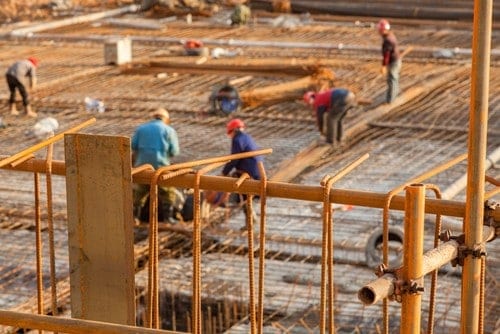Construction workers face a variety of risks on a daily basis. Many are obvious, such as slips, trips and falls; heavy lifting and large, moving vehicles. However, not all risks are this clear to see. One of the most dangerous and often overlooked hazards is heat.
Now that spring is here, and many outdoor jobsites are reopening for business, hot weather can be one of the most dangerous elements in the construction industry. But, temperature can also prove a problem year-round, thanks to equipment or processes that put workers in harm's way. Therefore, all employers institute measures that protect workers from heat-related risks.
Identify where problems can occur
Problems associated with heat can manifest themselves in a variety of ways. Identifying the source of the risk is of primary importance. The biggest heat-related threat is dehydration. Even in the coldest months, overheated workers can become exhausted, and more susceptible to health problems or accidents on the job. Common signs of dehydration include:
- Heat rash
- Cramps
- Exhaustion
- Illness
At this stage, the best treatment method is to stop the worker from performing manual labor, move them to a cooler area and seek medical help.
Additionally, there are several key demographics that may be most susceptible to heat-related illness. Those who are outside in the hottest, most humid weather of the year are most likely to fall prey to heat-related health problems. People who have prior conditions, such as heart disease or circulatory disorders, are also in danger, as well as those who abuse drugs. Furthermore, those who are performing tasks while wearing heavy safety equipment or certain clothes may be at risk. Company culture can also interfere, as many employees are embarrassed to admit they are feeling ill, if they don’t have an open line of communication with their supervisor.
Stop the threat of heat at its source
If an employee shows signs of heat-related illness, steps should be taken immediately to improve their situation. However, it is safer and more cost-effective to implement more proactive strategies to stop this problem at its source.
For example, employers may want to make the working environment as comfortably cool as possible. This can be achieved via air conditioners, cooling fans, ventilation, insulation of hot surfaces and other key steps. Keeping workers as far away from warm surfaces as possible may also help.
The Occupational Safety and Health Administration also recommends that certain practices take place within the construction company to further lower the risk of heat-related illnesses. Ideally, a risk management plan will address this topic, as should the specific emergency plan that details how workers should respond to this hazard. Scheduling can also reduce the risk of heat by stopping employees from operating in peak hours of the day, or by shortening their hours.
Above all else, everyone in the company needs to be trained about risk factors, types of illnesses, the value of staying hydrated, and how to react if a problem does occur. This way, any issue can be caught as early as possible, and workers can feel safer and healthier on the job.


